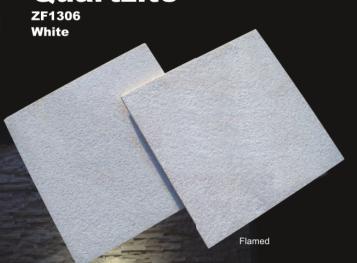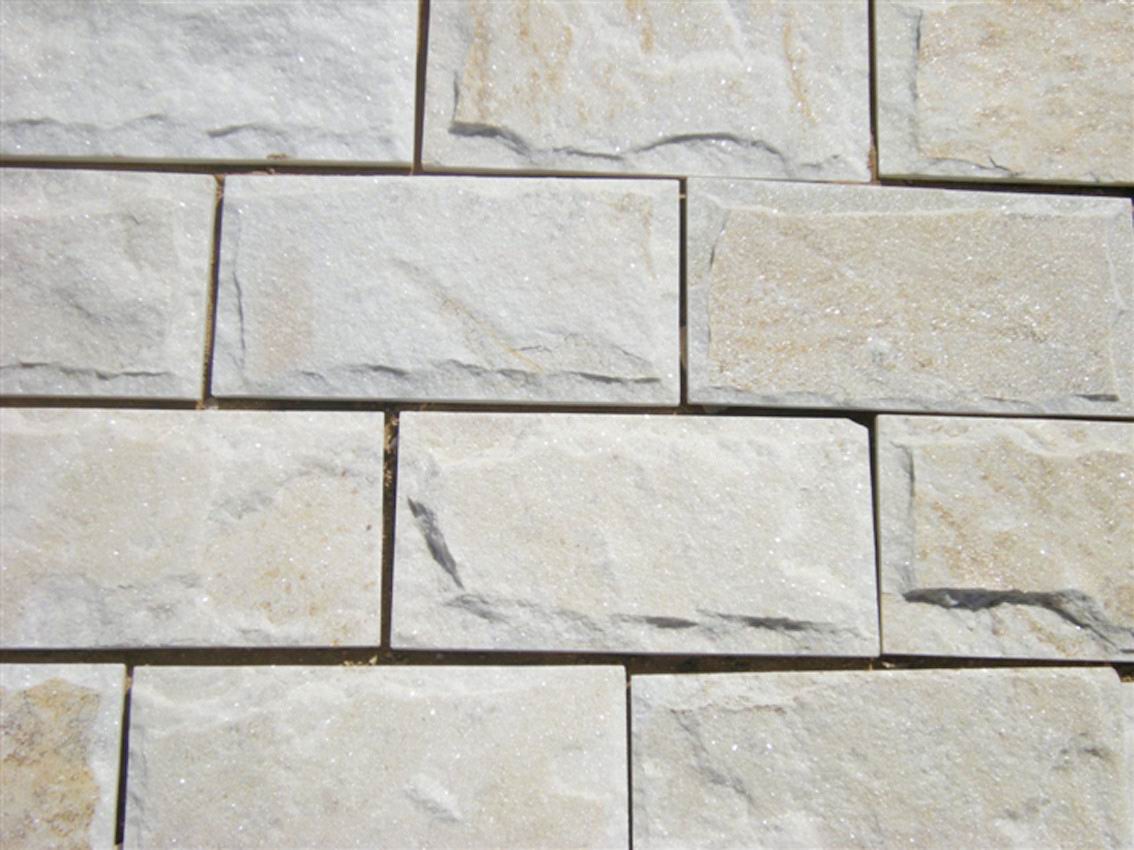Quartzite profile:
Quartzite is a metamorphic rock composed mainly of quartz (quartzite content greater than 85%), quartz sandstone and chert formed by metamorphism. Is generally composed of quartz sandstone or other siliceous rocks through regional metamorphism, recrystallization and form. It may be in the vicinity of siliceous magma through thermal contact metamorphism of rocks formed quartzite.
Quartzite protolith can be: single mineral quartz sandstone, argillaceous, calcareous quartz sandstone, colloidal siliceous sedimentary rocks (including clastic chert dissolution and redeposition associated with fumaroles chert) and deep-sea radiolarian chert. Different raw quartzite rock formation, according to the structure, metacrystal degree byproducts, rock paragenesis and occurrence such distinction. For example, by the formation of a single mineral quartz sandstone quartzite, coarse-grained, often with typical balanced mosaic structure, contains more minerals such as zircon; cherts formed by the quartzite, even when subjected to high-grade metamorphism, mineral rarely greater than 0.2 mm particle size, but also has the dentate intergrowth structure, generally do not contain minerals.
Quartzite consists of:
The main minerals are quartz quartzite, mica minerals and may contain hematite, goethite, etc. The main chemical composition is silica - SiO 2. Quartzite is generally massive structure, granular texture and was crystal aggregates, with shiny glass to the oil sheen. The color is also very rich in quartz, common colors are green, gray, yellow, brown, orange and red, white, blue, purple, red and so on.
Quartzite physical properties:
Mohs hardness: 7.
Density: 2.64g/cm 3 ~ 2.71g/cm 3
Optical characteristics: heterogeneous collection.
Refractive index: 1.544 ~ 1.533, 1.54 point measurement method often.
Birefringence: unpredictable.
UV fluorescence: general no; chromium mica quartzite: none to weak, gray or red.
Absorption spectrum: no features, chromium mica quartzite: It has 682nm, 649nm absorption band.
Stain treatment: can be dyed various colors, zoom in detecting visible dye in intergranular distribution. 650nm green stained quartzite visible absorption band.
Quartzite Category:
Different raw quartzite rock formation, according to the structure, metacrystal degree byproducts, rock paragenesis and occurrence such distinction. For example, by the formation of a single mineral quartz sandstone quartzite, coarse-grained, often with typical balanced mosaic structure, contains more minerals such as zircon; cherts formed by the quartzite, even when subjected to high-grade metamorphism, mineral rarely greater than 0.2 mm particle size, but also has the dentate intergrowth structure, generally do not contain minerals.
Press the quartz content can be divided into two categories: ① feldspathic quartzite, quartz content greater than 75%, often containing minerals such as feldspar and mica, feldspar content is generally less than 20%. Such as feldspar content increases, the transition leucoleptite. ② quartzite, quartz content greater than 90%, can contain a small amount of mica, feldspar, magnetite and other minerals.
Quartzite features:
1 quartzite, high hardness, water than the end, can be used as building materials, particularly stone used outdoors, such as paving stones, floor, cladding, etc.
2 quartzite particles delicate, compact structure, can be used as stone carving handicrafts, especially solid quartz stone.
3 due to the unique crystal structure of quartzite, it presents a colorful gorgeous and unique color, and texture, with special decorative effect.
4 quartzite widely distributed, easily mined, easy processing, low cost, is the high cost of stone products.
5 In addition quartzite versatile, can be used as the manufacture of glass, ceramics, metallurgy, chemicals, machinery, electronics, rubber, plastics, paint and other industries important raw material
But quartzite brittle texture, bending strength is not good good, easy short crack, some varieties of radiation is higher.


remark: translate from alwee’s blog
 English
English




